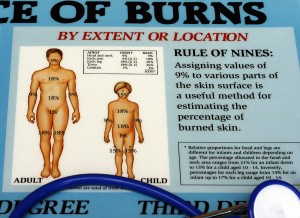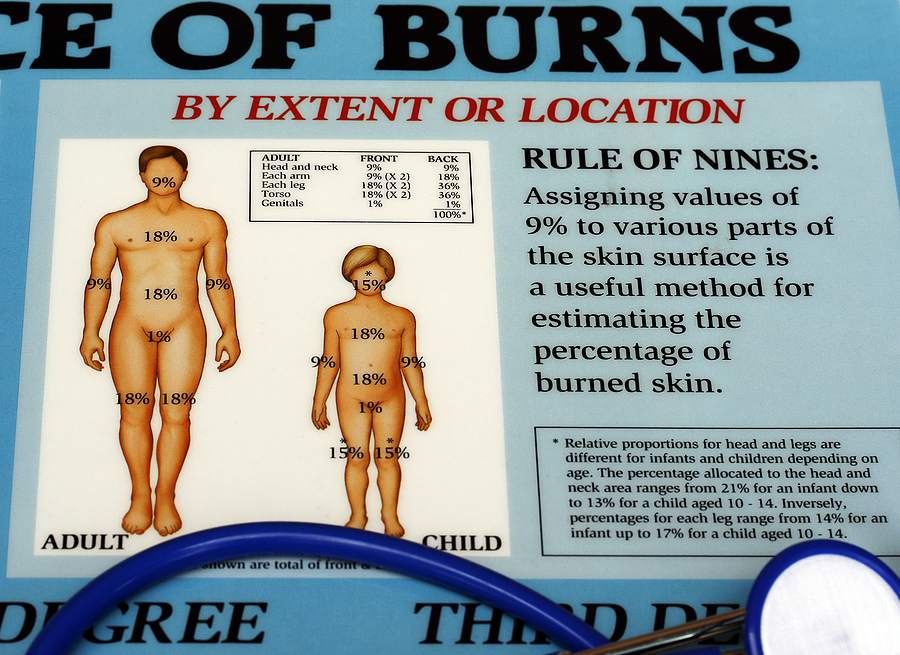Burns relating to workers’ compensation injuries account for 30 percent of the admissions seen at the Maricopa Medical Center in Phoenix, Ariz.; the second busiest burn center in the nation, according to Dr. Allen Holloway, the director of Burn Outpatient Services.
According to Dr. Holloway, who spoke at Andler & Associates’ recent educational training burn, there are several factors that can affect the severity outcome:
- Burn depth
- Amount of skin burned (measured as percent of total skin)
- Age – the very young or very old are the most at risk
- Chronic illness/overall health
- The part of the body burned can affect function, such as with hands or feet; extremities and joints can pose more problems.
- Presence of smoke inhalation
In addition, burns evolve in the first 72 hours, Dr. Holloway said.
According to a 2010 Paradigm white paper, Volatility and Complexity in Burn Injury Claims, workers’ compensation claims involving burns cost an average of $200,000 to upwards of millions of dollars. The scope of the injured area and whether complications arise are key factors in determining how much a burn claim will cost, the Paradigm paper states.
Rule of Nines
 Burn area can be measured on the human body by using multiples of nine, also called the Rule of Nines, Dr. Halloran said. The following body parts can be measured as:
Burn area can be measured on the human body by using multiples of nine, also called the Rule of Nines, Dr. Halloran said. The following body parts can be measured as:
- Head 9%
- Chest 9%
- Abdomen 9%
- Back and buttocks 18%
- Arm 9%
- Groin 1%
- Leg 18%
Depth also plays a role in the treatment course and cost of a burn injury. Depth can be divided into partial – shallow, partial – deep and full thickness.
According to Dr. Holloway, if there is a third degree burn bigger than a .50 piece a skin graft will be needed.
He described three main types of burns:
- Thermal burns can occur as a scald burn, which is the most common injury seen with children. They can also occur on contact with a flame.
- Chemical burns may be acid-based causing tissue damage by coagulation necrosis and protein precipitation. Many types of chemicals can keep burning, like cement powder. There are also organic burns resulting from petroleum products that can dissolve the fat under the skin and have toxic effects on kidneys and liver.
- Electrical burns can be high voltage, low voltage or alternating current. Alternating current is considered the worst type of electrical burn. The extent of an electrical burn injury is determined by the strength of the current and the duration of contact.
According to OSHA statistics, one of the four main causes of worker deaths on construction sites is electrocutions.
The skin, bones and muscles have high resistance while ligaments and nerves have low resistance, Dr. Holloway said.
There are several things medical providers need to know in order to treat burns, Dr. Holloway said:
- Did the burn take place indoors or outdoors?
- Did the clothing ignite?
- How long before the fire was extinguished?
- How did the burn happen?
- Was there an explosion?
- Was the patient thrown?
Was this article valuable?
Here are more articles you may enjoy.


 Viewpoint: The Impact of Behavioral Health on Workers’ Comp
Viewpoint: The Impact of Behavioral Health on Workers’ Comp  Poll: Consumers OK with AI in P/C Insurance, but Not So Much for Claims and Underwriting
Poll: Consumers OK with AI in P/C Insurance, but Not So Much for Claims and Underwriting  Synopsys Sued by Private Equity Firm for Shopping $3 Billion Unit
Synopsys Sued by Private Equity Firm for Shopping $3 Billion Unit  SC High Court Strikes ‘Troubling’ Denial of Comp Claim, Says Can’t Be Based on Stats
SC High Court Strikes ‘Troubling’ Denial of Comp Claim, Says Can’t Be Based on Stats 